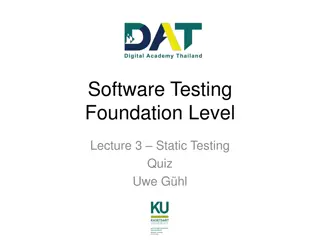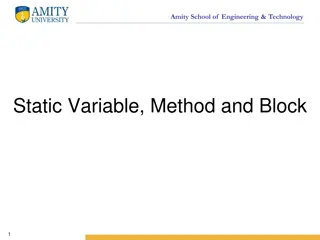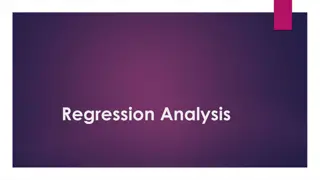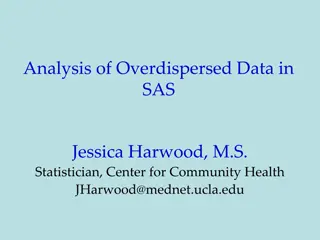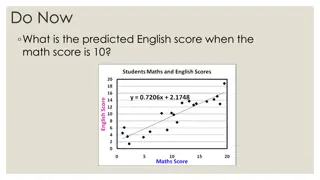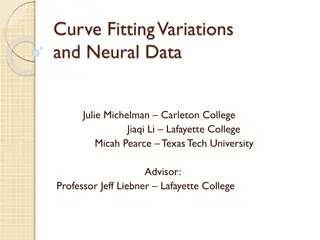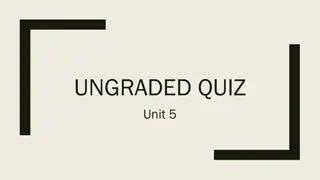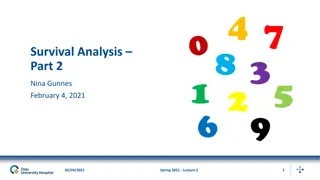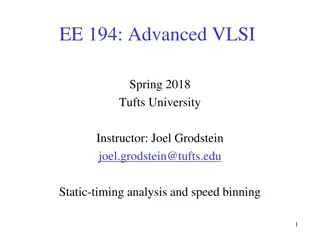Enhancing Regression Test Selection with Static Analysis
Regression testing can be time-consuming, especially with large test suites and frequent code changes. This research explores the use of Static Regression Test Selection (SRTS) to improve efficiency by analyzing Java class files and dependencies statically. The comparison with Dynamic RTS highlights the benefits and limitations of this approach, shedding light on the challenges posed by reflection in making SRTS unsafe. Explore the potential of SRTS in optimizing testing processes to save developer time and machine resources.
Download Presentation

Please find below an Image/Link to download the presentation.
The content on the website is provided AS IS for your information and personal use only. It may not be sold, licensed, or shared on other websites without obtaining consent from the author. Download presentation by click this link. If you encounter any issues during the download, it is possible that the publisher has removed the file from their server.
E N D
Presentation Transcript
Reflection-Aware Static Regression Test Selection August Shi, Milica Hadzi-Tanovic, Lingming Zhang, Darko Marinov, Owolabi Legunsen OOPSLA 2019 Athens, Greece October 23, 2019 CCF-1421503 CCF-1566589 CNS-1646305 CNS-1740916 CCF-1763788 CCF-1763906
Development Cycle Regression Testing Too slow! Version Control Test CI Server 2 Fetch Changes Pass/Fail Commit 1 5 Changes Build ? 6 Release/Deploy Developers 2
Regression Testing is Slow! Test suite is very large At Facebook, ~104 tests run per change1 Changes happen frequently At Google, 20+ code changes per minute2 Wasting developer time and machine time Speed up using Regression Test Selection 1Machalica et al., Predictive Test Selection , ICSE-SEIP 2019 3 2http://google-engtools.blogspot.com/2011/06/testing-at-speed-and-scale-of-google.html
Regression Test Selection (RTS) Tests Tests T1 T2 T3 T4 TN T1 T2 T3 T4 TN Code Under Test Code Under Test v1 v2 Change Many ways to do RTS 4
Static Regression Test Selection (SRTS) Nodes are Java class files Dependency edges are computed statically (use edges, inheritance edges) Library code (infrequent changes) L Changed A1 A2 A3 Developer s code Run Test code T2 T3 T1 5 Depends on
SRTS Pros and Cons (vs Dynamic RTS) Dynamic RTS: Get dependencies from instrumented test runs Pros (vs dynamic RTS) Can have very fast analysis (versus instrumentation) Does not need test runs to compute dependencies Cons (vs dynamic RTS) Can over-approximate selected tests Prior work: end-to-end time similar to dynamic RTS1 Can under-approximate selected tests (miss bugs!) 6 Legunsen et al., An Extensive Study of Static Regression Test Selection in Modern Software Evolution , FSE 2016
Problem: Reflection makes SRTS unsafe Reflection programming language feature to examine/modify behavior at runtime Reflection Methods in Java: Class.forName() String Class String Class ClassLoader.loadClass() String Class ClassLoader.findSystemClass() byte[] Class ClassLoader.defineClass() Reflection makes SRTS miss selecting tests! 7
Example w/ Reflection class L { // JSL class public void p() {} public void m(String s) { Class c = Class.forName(s); } } class A1 extends L { public void m1() { m( A3 ); } } class T1 { @Test public void t1() { A1 a1 = new A1(); a1.m1(); }} class A2 { public static void m2() { new L().p(); } } class A3 { + int x = 0; } class T2 { @Test public void t2() { A2.m2(); }} class T3 { @Test public void t3() { new A3(); }} 8
Reflection-Aware SRTS Reflection-Aware (RA) SRTS recovers edges: Purely static Na ve Analysis String Analysis Border Analysis Hybrid static + dynamic Dynamic Analysis Per-test Analysis Upfront notice: Results are unfortunately rather negative 9
Nave Analysis and String Analysis Na ve Analysis: classes that use reflection method have edge to all other classes String Analysis: use string analysis to approximate names of classes and add edges Both ineffective for RTS! Select all tests after every change Due to full analysis of JSL See paper Can we improve precision w/o full JSL analysis? 10
Border Analysis Only few JSL methods lead to invoking a reflection method Border Method a public JSL method that may lead to invoking a reflection method A class that uses a border method can reach all other classes How to determine border methods? 11
Finding Border Methods Over-approximation Border methods are public JSL methods that reach reflection methods in call graph 55,453 of 124,196 methods! Static Border Analysis Under-approximation Border methods are the four reflection methods Missing indirect calls in JSL Four-method Border Analysis 12
Finding Border Methods (contd) Dynamically determine per project Record border methods from instrumented test runs once per project, then reuse for later changes Purely static at selection time Stack Trace: Border method Class.forName() T1 Class.forName L.m() A1.m1() First client method call T1.t1() Dynamic Border Analysis 13
Border Analysis (Example) Connect classes that call border method to all classes L A1.m1 calls border method L.m Changed A1 A2 A3 Run Run T1 T2 T3 14
Dynamic Analysis (Example) Find all classes used by reflection during test runs During tests run, only reflected A3 L Changed A1 A2 A3 Run Run Run T1 T2 T3 16
Per-test Analysis (Example) Like Dynamic Analysis, but label edges with the individual tests L Edge only exists for T1 T1 Changed A1 A2 A3 Run Run T1 T2 T3 17
Experimental Setup Evaluation on 1173 revisions of 24 open-source Maven projects from GitHub RQ1: Safety/precision of RA SRTS tests selected RQ2: Safety/precision of RA SRTS dependencies RQ3: RA SRTS percentage of tests selected RQ4: RA SRTS end-to-end time RQ5: Sizes of the graphs See paper 18
RQ1: Safety/precision of tests selected Compare safety/precision w.r.t. Ekstazi (state- of-the art dynamic RTS technique) Let ? be the set of tests selected by Ekstazi, and ? be the set of tests selected by our technique |?\T| |? ?| |?\X| |? ?| ? ? = Safety Viol. %: Precision Viol. %: ? ? = X-RU X-Bd 3.0% X-Bs 3.0% X-D X-P RU-X Bd-X 51.0% Bs-X 53.6% D-X P-X Avg 5.8% 3.1% 4.9% Avg 26.3% 50.8% 29.5% Bd = Border Analysis (Dynamic) Bs = Border Analysis (Static) D = Dynamic Analysis P = Per-test Analysis 19
Why Unsafe? Four reasons for unsafety See paper Test-order dependencies Specifically problem for Per-test Analysis 20
Test-Order Dependencies (Per-test) class Server { static Class sessClz; static { try { sessClz = Class.forName( SessImpl ); } catch (Exception ex) { } } } Server T1 class T1 { @Test public void t1() throws Exception { Server s = new Server(); } class T2 { @Test public void t2() throws Exception { Server s = new Server(); } Different order, different dependencies! SessImpl T2 T1 T2 T2 T1 21
RQ4: End-to-end time RU 71.7% Bd Bs D 94.5% 98.3% 134.4% P 88.3% 22
RQ4: End-to-end time (offline) Do not include graph construction and instrumented run time (all that can be offline ) Per-test seems reasonable (but unsafe!) RU 69.1% Bd Bs D 85.8% 89.1% 91.2% P 75.8% 23
Discussion Results seem negative! RA SRTS is either impractical, or can be unsafe! Need RTS-specific reflection analysis Other directions: Unsafe RTS is becoming used in industry, but how unsafe is it? Faster base RU RTS: reduce over-approximation? 24
Conclusions Static RTS (SRTS) is unsafe due to reflection Propose 5 reflection-aware SRTS techniques Three purely static, two hybrid static-dynamic Reflection-aware SRTS is currently impractical End-to-end time is too high Fastest technique is still unsafe Future: make RTS-specific reflection analysis awshi2@illinois.edu 25
My Other Work Mutation Testing Flaky tests ICST 2019 ISSTA 2015 ICST 2019 ISSTA 2019 ESEC/FSE 2019 ICST 2018 ICST 2016 ISSRE 2016 ISSRE 2019 OOPSLA 2019 ASE 2016 ISSTA 2018 ESEC/FSE 2015 FSE 2016 FSE 2014 ICSE 2017 ICSE 2019 Regression Test Selection Test placement/ reduction 26
I will be on the job market! August Shi http://mir.cs.illinois.edu/awshi2 awshi2@illinois.edu 27
Example 29
Nave Analysis (Example) Classes that use reflection depend on all other classes L uses Class.forName L Changed A1 A2 A3 Run Run Run T3 T1 T2 30
String Analysis (Example) Use string analysis to approximate names of classes Class.forName can receive A1 , A2 , A3 L Changed A1 A2 A3 Run Run Run T1 T2 T3 31
Nave and String Analysis: Ineffective Select all tests after any change Na ve Analysis over-approximates too much String Analysis becomes similar to Na ve Analysis due to JSL analysis See paper Can we improve precision w/o full JSL analysis? 32
Why Unsafe? Ekstazi selects more than necessary Confirmed by Ekstazi developers RU safer than it seems Timeouts Fewer tests actually run than selected Nondeterministic generated files Different changes between techniques Test-order dependencies (for Per-test Analysis) 34
RQ2: Safety/precision of dependencies Fundamentally, tests may not be selected due to missing dependencies What percentage of tests have missing computed dependencies (relative to Ekstazi)? X-RU X-Bd X-Bs Avg 26.2% 0.0% 0.0% RU SRTS can be worse than prior results suggest! 35







